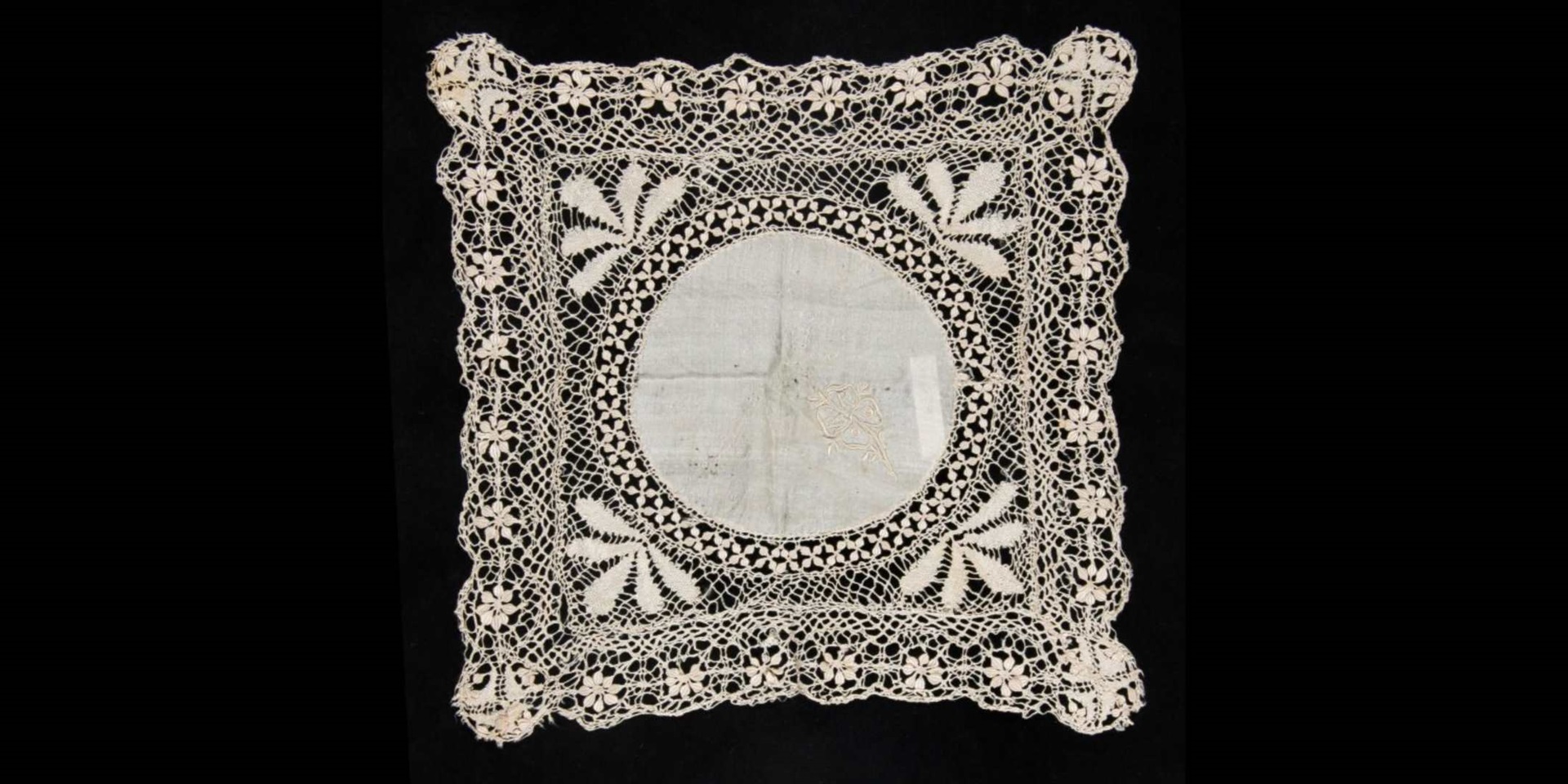
The 80th anniversary of Kristallnacht
Today marks 80 years since Kristallnacht (‘Crystal Night’), the night when the Nazis targeted, arrested and murdered Jews across Germany and parts of Austria and Czechoslovakia. This coordinated attack on 9–10 November 1938, also referred to as the ‘Night of Broken Glass,’ takes its name from the shattered glass that filled the streets after thousands of Jewish homes, businesses and synagogues were vandalised or destroyed.
More than 30,000 Jewish men were arrested and deported to concentration camps in Dachau, Buchenwald and Sachsenhausen. Kristallnacht represented a turning point in the Nazi persecution of Jews and led to a marked increase in Jewish emigration from Germany.
At the museum, we hold a delicate collection of laces and textiles that provides the only tangible link to the experiences of German Jewish immigrants Otto Strauss and Ilse Strauss (née Gimnicher). After Kristallnacht, Otto’s older brother Franz was arrested and sent to the Buchenwald concentration camp, while Ilse’s father and uncle were thrown into prison on trumped-up charges. Tragically, most of Ilse’s family would perish in the Holocaust. Their collection evokes the fragile traces of displaced lives.
Studio portrait of 20-year-old Ilse Gimnicher in Blackpool, England, 1940. Ilse Strauss Collection AR 3273, Leo Baeck Institute.
Velvet and Silk
Ilse Strauss (1920–1983) was born in the aftermath of World War I, in a small town in Lower Rhineland called Krefeld, known as Germany’s ‘City of Velvet and Silk.’ Ilse left school at the age of 15 to work in her family’s cloth business, after the 1935 Nuremberg Laws deprived Jews of their citizenship and forced out many of the Gimnicher’s employees.
Ilse met her future husband Otto Strauss (1909–1994), a law graduate, through a Jewish youth group. Otto was able to escape Nazi Germany before the outbreak of World War II. In October 1938, he arrived in Melbourne on SS Ascanius with his family’s most treasured possessions – an evocative collection of more than 50 lace and silk handkerchiefs and textiles embodying their former life and livelihood in Krefeld.
This handmade silk handkerchief with bobbin lace was made in the early 1900s and brought to Australia in 1938-39 by the Strauss family, Jewish migrants fleeing Nazi Germany. The centre features a circle of silk fabric with the embroidered initials ‘RK’ for Roesle Kahn, mother of Otto Strauss. ANMM Collection 00046629.
Traces of lace
It was Otto’s association with the German textile industry that guaranteed his entry into Australia. Unable to practise law when Adolf Hitler came into power, Otto trained at a textile school in Krefeld, near the Dutch border, and found work in the silk trade. He obtained an entry permit for Australia as a weaver and, in 1939, was able to bring his mother Roesle Kahn, sister Karola and brother Franz to join him in Melbourne.
Many of the handkerchiefs in the museum’s collection feature the monograms ‘RK’ and ‘KS’ for Otto’s mother and sister. They were the Strauss family’s passport to a new life in Australia.
Battenberg lace doily, 1900s. ANMM Collection 00046666.
Machine made furnishing lace, 1900s. ANMM Collection 00046671.
Battenberg lace doily, 1900s. ANMM Collection 00046667
Machine embroidered lace doily, 1900s. ANMM Collection 00046670.
In March 1939, 18-year-old Ilse was granted permission to enter the United Kingdom to work as a domestic. She left behind her parents Saloman and Meta Gimnicher (née Appel), 12-year-old brother Max Rudi, grandparents, aunts and uncles, all of whom were murdered in the Holocaust.
A cotton nightdress in the museum’s collection, decorated with lace inserts and bobbin lace trim, is a particularly poignant and haunting relic. Hand-worked embroidery at the upper left, over the wearer’s heart, reads ‘Meta’ for Ilse’s mother, who trained as an opera singer before marrying Saloman Gimnicher, a silk merchant.
Cotton nightdress with lace inserts and bobbin lace trim belonging to Ilse Strauss’ mother, Meta Gimnicher, 1920s. ANMM Collection 00046683.
Throughout the war years, Ilse continued to correspond with Otto, who was working as a weaver in a Melbourne factory. In July 1941, a policeman arrived at her door carrying a small parcel. Inside was a diamond engagement ring that Otto had sent by sea mail from Australia. In 1947, two years after the end of the war, Ilse immigrated to Australia and married Otto. The couple settled in Melbourne and had a son named Boyd.
A lifelong diary
Ilse kept a meticulous diary from the age of 11, which she later deposited at the Leo Baeck Institute in New York. She wrote, ‘Every human life is a freefall through time. Should we not leave our record? Those who come after us may want to know where we thus came from. A lifelong diary can be our priceless diary to the future; memory is a feeble ephemeral thing, but diaries have the power to place life’s experiences into proper perspective.’
Ilse’s diary was dedicated: ‘In memory of my martyred people throughout the ages, especially my beloved parents, my brother Max Rudi, my grandparents, aunts, cousins and friends.’
